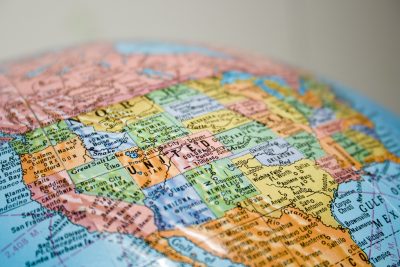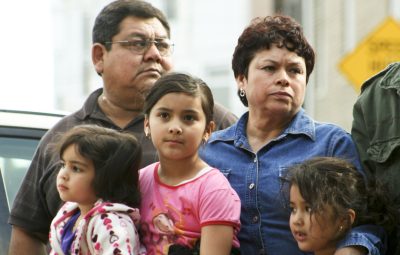Demographics
Immigrants are a vital, dynamic part of the U.S. population—especially when it comes to the workforce. 77.1% of immigrants are of working age (16–64), compared to just 62.0% of U.S.-born residents, making them key contributors to the economy as both taxpayers and consumers.
- 22.9 million immigrants are active in the U.S. workforce
- 74% of foreign-born residents are proficient in English
- 89.4% of all undocumented immigrants are of working age
- 5.2 million U.S. citizen children living with at least one undocumented family member
- Only 4.9% of immigrants are under 15, compared to 20.3% of U.S.-born residents
- 18% of immigrants are 65+, nearly identical to the 17.7% of U.S.-born seniors

The 2010 Census: The Stakes of an Accurate Count
Every 10 years, as required by the U.S. Constitution, the federal government undertakes a massive nationwide effort to count the residents of the United States, who now number more than 300 million. The results form the basis for the apportionment of congressional districts and the distribution of hundreds of billions of dollars in federal funds, as well as serving to guide a wide range of community-planning decisions across the country.DD The Census is, however, no stranger to controversy, such as the suggestion by some activists that immigrants sit out the Census this year to protest the federal government’s failure to enact comprehensive immigration reform.DD Yet, among demographic groups like immigrants and ethnic minorities who are typically under-counted in the Census, a boycott would be self-defeating. Moreover, anyone living in an area afflicted by a large under-count of any sort stands to lose out on political representation and federal funds.DD For instance, an undercount of Latino immigrants would impact anyone living in a state such as California, New York, or Illinois that has a large population of Latino immigrants—meaning that everyone in those states stands to lose political representation and access to economic and educational opportunities if their residents aren’t fully counted in 2010. Read More

The Ever-Changing Demographics of America
If there’s one constant throughout human history, it’s that everything changes. New scientific discoveries are made and new technologies are invented. New nations are born from the ashes of warfare or revolution. And people move from place to place in search of better lives for themselves and their descendants. In… Read More

States Will Need Immigrants to Counter Aging of the Labor Force
New population projections from the University of Virginia’s Demographics Research Group show that in many states in the Northeast and Midwest, growth of the working-age population is slowing due to aging, lower fertility rates, and people moving out of the state. The aging of the workforce in the… Read More

Restrictive Voting Laws Threaten to Block Millions of Latino Voters, Including Many Newly-Naturalized
Naturalization and voter registration rates have surged in recent months, but strict new voter laws in many states are threatening to reduce the number of Latinos voters (including many newly naturalized) who will be allowed to cast ballots. More than 185,000 citizenship applications were submitted in the final… Read More

Who Would Benefit from DAPA?
Within the next few months, the Supreme Court will determine whether the President’s deferred action initiatives announced in November 2014—namely, Deferred Action for Parents of Americans and Lawful Permanent Residents (DAPA) and expanded Deferred Action for Childhood Arrivals (DACA)—constitute a lawful exercise of executive discretion. That decision will both… Read More

Undocumented Population Continues to Decline in the U.S.
Despite significant job growth and an economic recovery over the last few years, the undocumented population in the United States has continued to decline. According to a new report by the Center for Migration Studies (CMS) released last week the undocumented population has decreased every year from 2009 to… Read More

U.S. Children of Undocumented Immigrants Set up for Failure by Current Policies
U.S. children are clearly at a disadvantage if they have at least one undocumented parent. According to a report by the Migration Policy Institute (MPI) released yesterday, of the estimated 5.1 million U.S. children under age 18 currently living with at least one undocumented parent, 79 percent (4.1 million)… Read More

Giving the Immigration Facts a Fighting Chance
As we move through the 2016 presidential election cycle, the issue of immigration will continue to be a central topic of the debate. The United States is at a tipping point after more than two decades without meaningful upgrades to its immigration system. Current U.S. law does not provide sufficient… Read More

Millions of Immigrants Could Become U.S. Citizens—and Voters
Politicians who demonize immigrants do so at their own peril. Immigrants are already a key voting bloc in many states. And they are only going to get stronger as more and more of them become lawful permanent residents (LPRs) and, ultimately, U.S. citizens who are eligible to vote. Needless… Read More

The Growing African Immigrant Population in the United States
Much is said and written about the immigrant population in the United States. However, most work focuses on immigrant populations from Latin America and Asia. Fortunately, the Pew Research Center has just provided a new snapshot of the foreign-born population that hails from countries across Africa. While Africans remain a… Read More
Make a contribution
Make a direct impact on the lives of immigrants.
